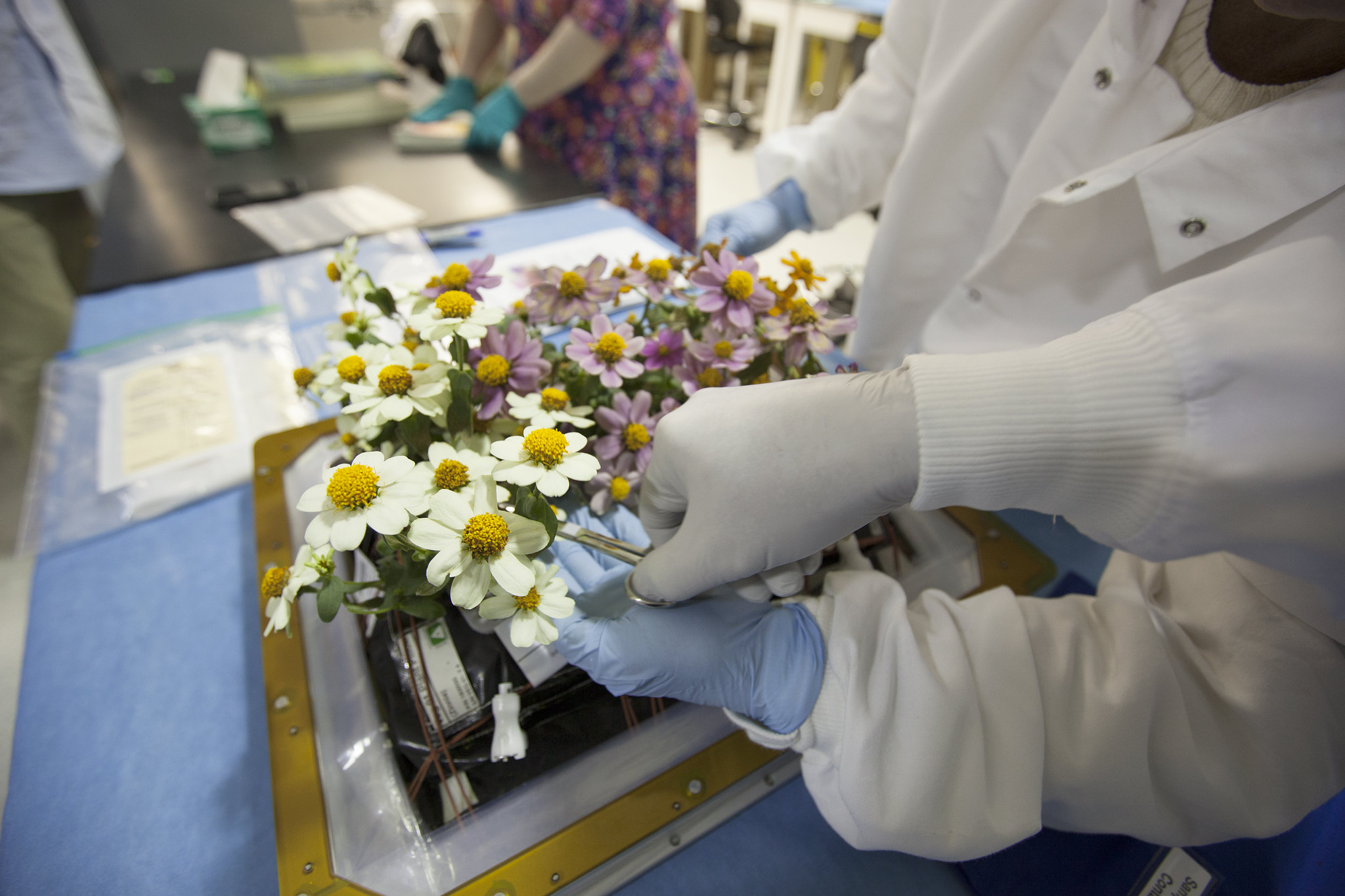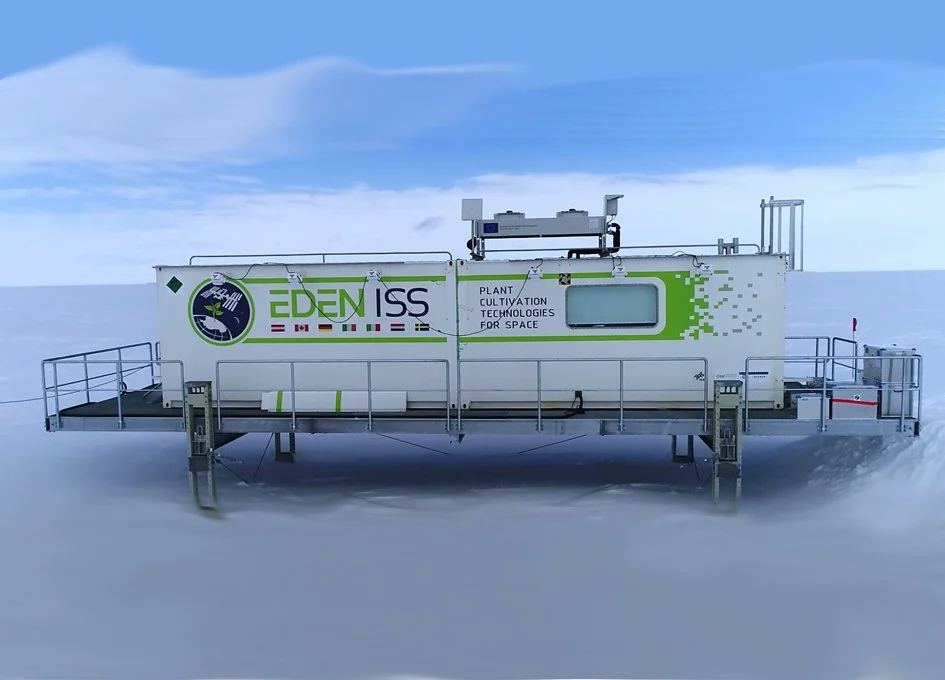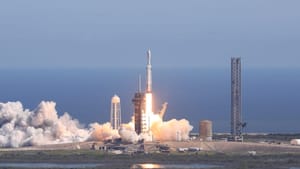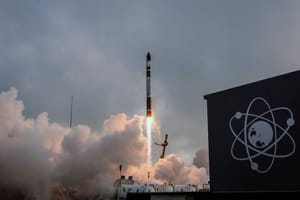
Mar 28, 2024
Plants on the moon
Tests regarding growing food in the harsh environment of space have been going on since the 1970s. Onboard Salyut 1, a space station launched by the Soviet Union, the crew experimented with growing onions and peas in a sealed container. This experiment marked one of the first attempts to understand how plants grow in the microgravity environment of space and laid the foundation for further research into space agriculture.
One well-known project is NASA's "Veggie" experiment aboard the International Space Station (ISS), which involves growing various crops such as lettuce, radishes, and zinnias in space using deployable growth chambers equipped with LED lighting to stimulate plant growth. The knowledge gained from such experiments not only contributes to the development of space agriculture but also has implications for sustainable agriculture practices on Earth, particularly in areas with limited arable land or resources.

The Chinese space station (CSS or also known as Tiangong space station) is another modern station that incorporates the growing of flora in space. This allows for more fresh food helping break up the cycle of rehydrated and packaged food.
NASA themselves says it best,
As humans explore space, we will want to bring plants for both aesthetic and practical reasons. We already know from our pioneering astronauts that fresh flowers and gardens on the International Space Station create a beautiful atmosphere and let us take a little piece of Earth with us on our journeys. They’re good for our psychological well-being on Earth and in space. They also will be critical for keeping astronauts healthy on long-duration missions.
Nowadays growing plants in limited gravity, areas with more radiation, we know is doable. NASA studies have led to hydroponics taking off and vertical farming. We've advanced so far as to have research projects growing plants in shipping containers all the way in Antarctica.

Yet a more recent study goes over a new possibility. What if we could bring agriculture to the moon? A plant-growth study is one of three experiments that the Artemis 3 astronauts are expected to deploy on the lunar surface. The first astronauts to land as apart of the Artemis program plands on deploying a lunar mini greenhouse.
The experiment is called LEAF (Lunar Effects on Agricultural Flora). Nasa definitely loves their acronyms! Nasa officials reported all of this on March 26th going on to elaborate
"Plant growth and development data, along with environmental parameters measured by LEAF, will help scientists understand the use of plants grown on the moon for both human nutrition and life support on the moon and beyond,"
China notably also has been testing the affects of flora on the moon with their Chang'e 4 mission carrying cotton. After Chang’e 4 landed on the far side of the moon, one of its experiments was to water some seeds in sealed capsules. These grew briefly, then were killed when the lunar night crossed over Chang’e 4 and dropped temperatures below -50C.

Yet NASAs is on a scale unheard of and hopefully the Artemis program will be able to further out understanding of how life interacts beyond LEO, NASA describes the mission as
--The first experiment to observe plant photosynthesis, growth and systemic stress responses in space-radiation and partial gravity,
Plant cultivation experiments in space typically involve small chambers separate from the life support system, focusing on studying plant behavior and development under reduced gravity and in closed environments. The initial Soviet Union flight experiment, Oasis 1, tested plant growth systems aboard the unmanned Cosmos 368 flight before its deployment on a manned mission to Salyut 1 in 1971. Oasis 1 marked the beginning of successful series chambers, including Oasis 1 M, which addressed technical issues like water metering and nutrient delivery systems.
The Soviet Union also developed the Vazon plant growth system, which flew on Soyuz 12 in 1973, relying on the spacecraft's lighting system for illumination. Additionally, experiments like Malachite, flown on Salyut 6, investigated the psychological benefits of crew interaction with plants, paving the way for bio-regenerative life support system (BLSS) research on the Mir space station with the SVET space greenhouse.

NASA's involvement in plant growth experiments started with the Space Shuttle Program, culminating in experiments like the Plant Growth Unit (PGU) and the Advanced Astroculture (ADVASC) flown on the International Space Station (ISS). ADVASC, for instance, autonomously provides stable environmental conditions for plant cultivation under microgravity, utilizing lessons learned from previous experiments to improve efficiency and reliability.

These experiments have paved the way for future missions, such as NASA's Artemis program, which aims to return humans to the Moon. Plans include deploying mini greenhouses on the lunar surface to study plant growth in a lunar environment. Insights gained from previous experiments in space agriculture will be invaluable for designing these lunar habitats, ensuring the sustainability of future human presence on the Moon and beyond.
Growing plants on the Moon poses distinct challenges owing to its hostile environment and lack of atmospheric and terrestrial resources. The lunar surface experiences extreme temperature fluctuations, ranging from freezing lows during the lunar night to scorching highs in the lunar day, necessitating precise thermal regulation within plant growth systems. Furthermore, the absence of an atmosphere and soil means that all essential resources, including water, nutrients, and substrates, must be transported from Earth or acquired through complex in-situ resource utilization (ISRU) methods, adding logistical complexities to lunar missions. High levels of solar and cosmic radiation, compounded by the lack of a protective atmosphere and magnetic field, pose a threat to plant growth, necessitating effective shielding within growth habitats. Additionally, microgravity conditions on the Moon can disrupt crucial plant growth processes, emphasizing the need for innovative engineering solutions to mitigate these effects and provide adequate support for plant development. Lastly, managing lunar dust and regolith contamination within growth habitats is vital to safeguarding plant health and productivity. Addressing these multifaceted challenges requires rigorous research and experimentation to develop resilient plant growth systems tailored for lunar conditions, crucial for sustaining future human settlements and exploration endeavors on the Moon.
Ultimately this technology is vital in not just establishing a permanent presence in the moon but extending ourselves outward into the Solar System. It represents concrete steps to not just understanding the infinite cosmos but understanding where we fit into it.



